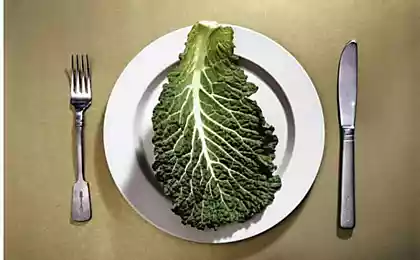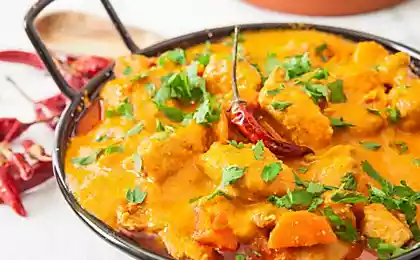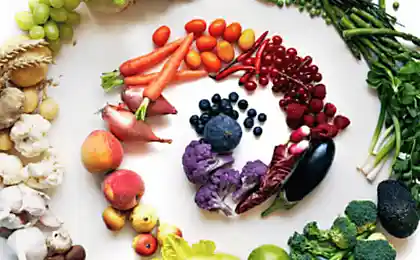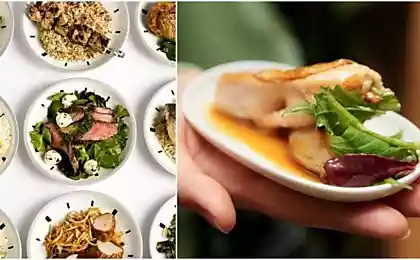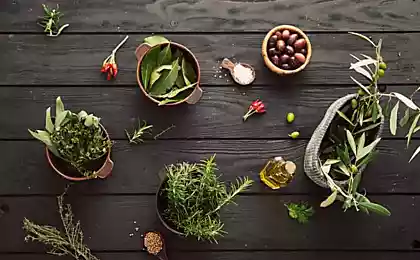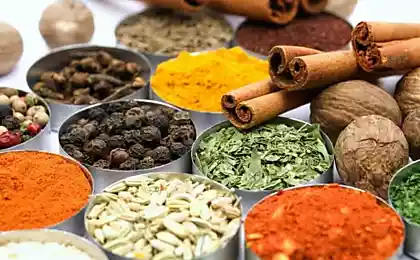364
Spice Guide
Spices are different parts of plants with a specific aroma and taste, traditionally added to food in order to improve the taste of products.
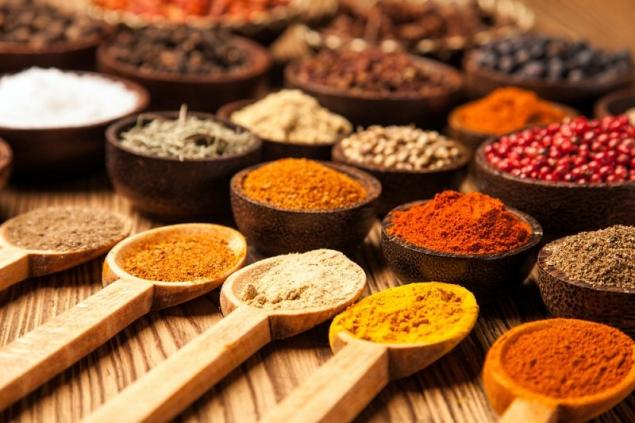
DepositPhotos
Spices can be different in taste - sweet, spicy, bitter, sour or tart. Indians make masalas (mixtures of spices), using all five flavors, so masala usually contains up to 15 ingredients.
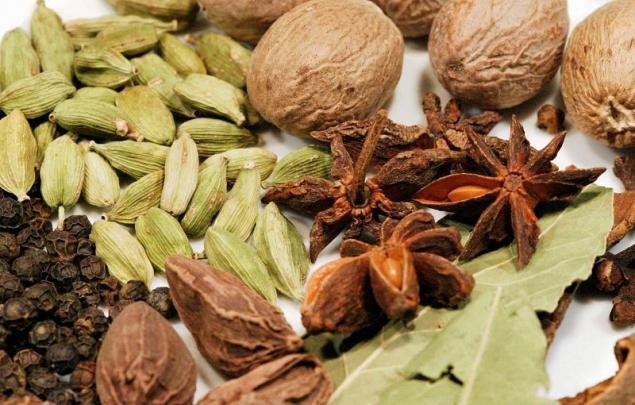
The cook who makes spicy compositions is like a perfumer who mixes aromas. Experienced cooks intuitively feel what components are combined with, and for those who are just mastering these wisdoms, there are special tables that can be found in cookbooks.
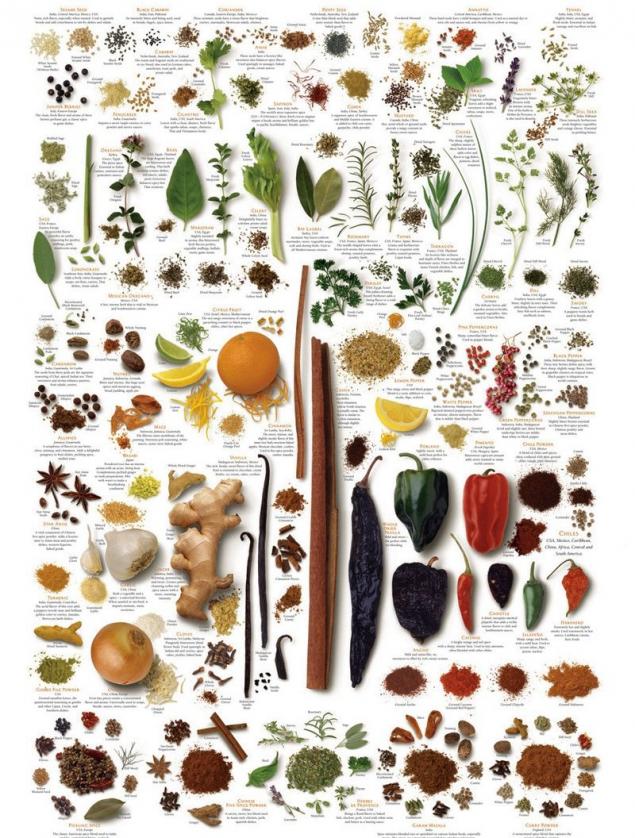
Most spices are part-time medicinal herbs. They inhibit the growth and development of bacteria, activate the removal of toxins from the body. In order for the dish to turn out tasty and aromatic, you must know exactly what spices are suitable for certain products.
Gas-forming products All spices in one way or another reduce gas formation. Proper use reduces the negative properties of products and emphasizes the positive.
With potatoes, coriander and turmeric are best combined.
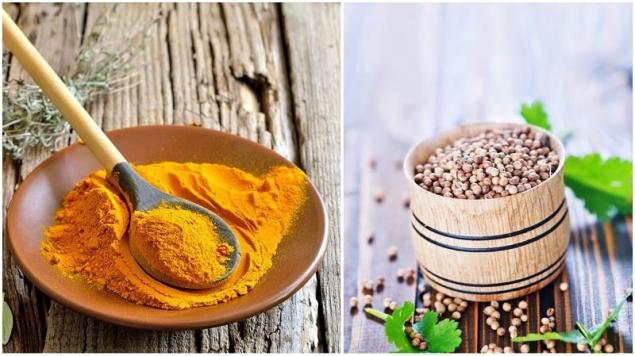
With legumes - cumin, ginger, pepper and coriander.
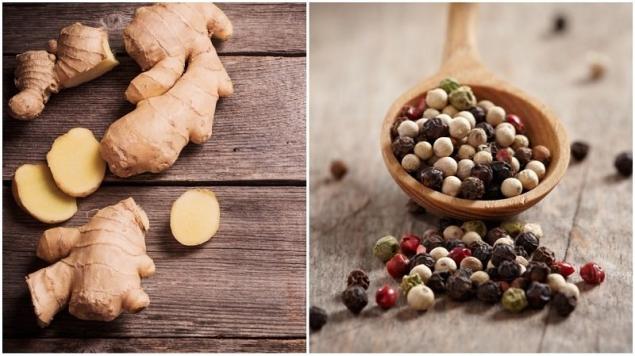
With cabbage - coriander, fennel, cumin.
37349.
Slime-forming products
Properties of spices What to do
Pulses
Editorial Board
Some spices do not go together at all. For example, basil is better not to mix with other spices, except for garlic, and cumin is combined only with anise, fennel and pepper.
The good news is that our dishes are different. However, it is worth remembering that an excess of spices interrupts the natural taste and aroma of products. After all, spices are just an addition to the dish, not the dish itself. Be brave to experiment and discover new and unusual combinations of tastes!

DepositPhotos
Spices can be different in taste - sweet, spicy, bitter, sour or tart. Indians make masalas (mixtures of spices), using all five flavors, so masala usually contains up to 15 ingredients.

The cook who makes spicy compositions is like a perfumer who mixes aromas. Experienced cooks intuitively feel what components are combined with, and for those who are just mastering these wisdoms, there are special tables that can be found in cookbooks.

Most spices are part-time medicinal herbs. They inhibit the growth and development of bacteria, activate the removal of toxins from the body. In order for the dish to turn out tasty and aromatic, you must know exactly what spices are suitable for certain products.
Gas-forming products All spices in one way or another reduce gas formation. Proper use reduces the negative properties of products and emphasizes the positive.
With potatoes, coriander and turmeric are best combined.

With legumes - cumin, ginger, pepper and coriander.

With cabbage - coriander, fennel, cumin.
37349.
Slime-forming products
- Milk: in hot milk add cinnamon, cardamom, saffron.
- Dairy products: coriander, fennel, cinnamon, ginger, cumin.
- Ice cream: cinnamon, cloves, cardamom.
- Sweets: ginger, cardamom, cinnamon, nutmeg.
- Fatty foods require saffron, ginger, mustard or turmeric.
- Caffeine-containing products – add cardamom.
Properties of spices What to do
- Meat spices
The most profitable combinations for beef are a mixture of different peppers, tarragon, thyme and rosemary. However, the taste of beef will be incomplete without basil, sage, coriander and cumin. Pork loves cumin, rosemary and marjoram, and if you supplement this bouquet with nutmeg, thyme and any pepper, the taste will only win.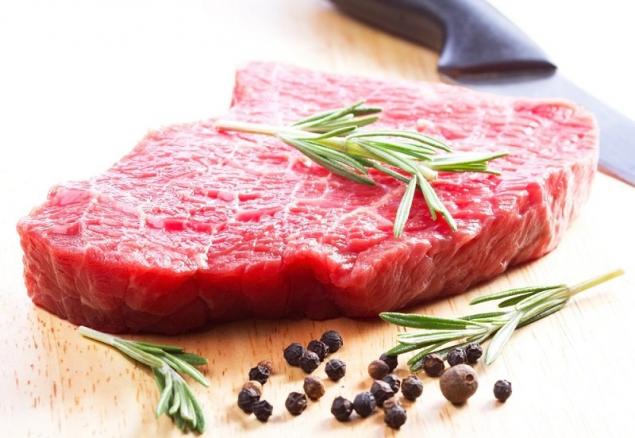
DepositPhotos - For the bird.
The bird will be much tastier with mint, sage and basil, but a little curry and hot pepper will not hurt to make the meat more spicy and spicy.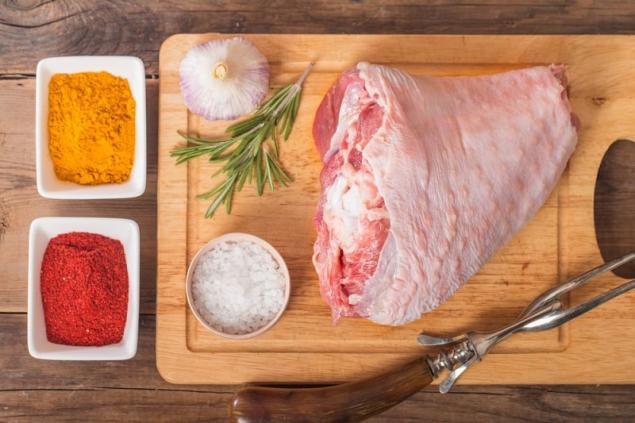
DepositPhotos - Spices for fish
For fish and seafood, combinations of marjoram, ginger, rosemary, mustard seeds, garlic, tarragon and bay leaf are suitable, and pepper - burning, sweet or fragrant will be an excellent addition. The taste and aroma of fried fish will emphasize cardamom, fennel, dill, coriander, and grilled fish will be especially appetizing with white pepper, turmeric, paprika and saffron.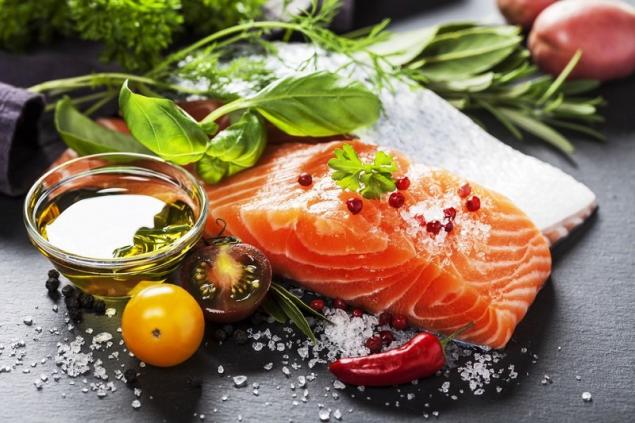
DepositPhotos - For grilled dishes
Red pepper, fragrant pepper, cardamom, thyme, marjoram, nutmeg and nutmeg, cumin, ginger, chili pepper. - For game.
Thyme, ordinary oregano, fragrant pepper, red pepper, juniper. - For stew
Red pepper, ginger, turmeric, coriander, mustard, cardamom, cumin, black pepper, fragrant pepper, nutmeg, cloves. - For cabbage.
Coriander, fennel, cumin, black mustard seed. - For potatoes.
Coriander, turmeric and asafethida. - For marinades
Laurel leaf, juniper (berries are added to marinades when cooking game and fish), dill twigs with buds, flowers or seeds. - For fruits, juices, compotes
Cinnamon, cloves, ginger, badian, cardamom. - For pate.
White pepper, cinnamon, ginger, bay leaf, cloves, cinnamon, badian, ginger, cardamom. - For baking.
Clove, cinnamon, badian, ginger, cardamom, scented pepper, orange peel, anise, sesame, poppy, vanilla. - For hot milk.
Cinnamon, cardamom, saffron.
Pulses
- Peas
Ginger, cinnamon, chili pepper, scented pepper, turmeric, coriander, fenugreek, cumin, kalingi, nutmeg, dill (seeds), curry, black pepper. - Buckwheat.
Perfume pepper, chili, cumin, turmeric, cinnamon, cloves, black mustard, dill (seeds), dill (greens), asafethida, curry. - manca
Ginger, turmeric, cinnamon, chili, shambala, asafetida, curry, nutmeg. - Oats
Turmeric, fragrant pepper, shambala, cloves, asafetida, curry, chili, dill green. - Perlovka
Ginger, cloves, peppers, turmeric, fenugreek, asafethida. - Wheat
Chile, ginger, curry, nutmeg, cardamom. - millet
Ginger, turmeric, cloves, mustard black, black pepper, fenugreek, curry. - Rhys
Chile, ginger, cinnamon, cloves, turmeric, cumin, asafetida, black mustard, cumin, Kalingi. - beans
Chile, scented pepper, ginger, cumin, cinnamon, cloves, fenugreek, kalingi, nutmeg. - Cell.
Ginger, cloves, peppers, turmeric, fenugreek, asafethida.
Editorial Board
Some spices do not go together at all. For example, basil is better not to mix with other spices, except for garlic, and cumin is combined only with anise, fennel and pepper.
The good news is that our dishes are different. However, it is worth remembering that an excess of spices interrupts the natural taste and aroma of products. After all, spices are just an addition to the dish, not the dish itself. Be brave to experiment and discover new and unusual combinations of tastes!
What kind of dress should you not wear at special events?
This is the best hairstyle to do on New Year’s Eve! I found a great option for long hair.









